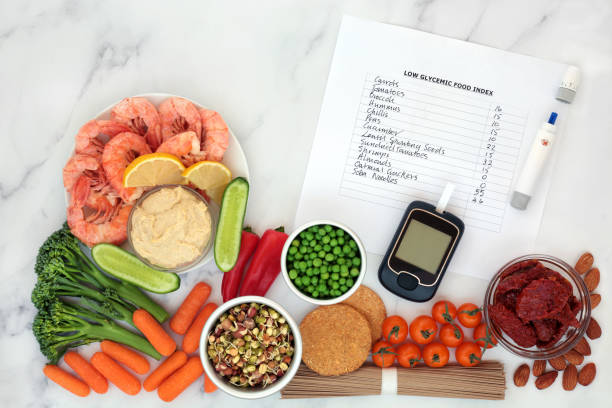
Before diving into a weight management journey, understanding your starting point is crucial. It’s like setting your GPS before a road trip. Take stock of your current health status – check your weight, fitness level, and general health. This includes considering factors like body mass index (BMI), waist circumference, and any medical conditions you might have.
Setting goals is not just about what you want to achieve but also how you plan to get there. Short-term goals give you immediate targets to aim for, while long-term goals keep you focused on that bigger picture. For instance, a short-term goal might be to incorporate a daily 30-minute walk, whereas a long-term goal could be to lose a certain amount of weight or run a 5K.
Using SMART criteria to set goals can make a big difference. This means making them Specific, Measurable, Achievable, Relevant, and Time-bound. Instead of vague goals like ‘get in shape,’ aim for something like ‘lose 10 pounds in three months by exercising three times a week and following a balanced diet.’ This makes your goal clear and gives you a roadmap to follow.
Flexibility is key. Life happens, and sometimes you need to adapt your goals to fit changing circumstances. Maybe you get a new job that changes your daily routine, or maybe you encounter an unexpected health issue. Being able to adjust your goals ensures that you keep moving forward, even if the path changes a bit.
Realistic goals keep you motivated and focused. They help you track your progress and celebrate the small victories along the way. This makes the journey more rewarding and sustainable.
Tracking Methods and Tools
When it comes to tracking your weight management progress, there are tons of methods and tools available. Each has its own perks, so it’s all about finding what works best for you.
Tracking apps have become super popular for a reason. They offer convenience right at your fingertips. You can log your meals, track your workouts, and even monitor your sleep patterns. Some apps even sync with wearable devices to give you a comprehensive look at your daily activities. Daily reminders and goal-setting features keep you accountable and motivated.
If you prefer the traditional route, a good old-fashioned journal can do wonders. Writing things down makes it more personal and tangible. You can jot down what you eat, your exercise routines, and even your thoughts and feelings. This can help you see patterns and triggers for unhealthy behaviors. Plus, there’s something satisfying about physically writing down your progress.
Wearable technology like fitness trackers and smartwatches can be game-changers. They provide real-time data on everything from your steps and heart rate to your sleep quality. This constant feedback can help you make adjustments on the fly and stay motivated. Plus, many wearables sync with your smartphone, making it easy to track everything in one place.
Progress photos and measurements offer another layer of tracking. Sometimes, the scale doesn’t tell the whole story. Taking regular photos and noting down measurements like waist, hips, and arms can show changes that numbers might miss. This visual evidence can be super motivating, especially on days when you feel stuck.
No single method is better than another; it’s all about what fits into your life seamlessly. Whether you go digital or stick with pen and paper, the key is consistency. Consistent tracking provides a clear picture of what’s working and what needs tweaking. This empowers you to make informed decisions on your journey.
Nutritional Monitoring
Keeping a food diary can offer valuable insights into your dietary habits. By logging everything you eat and drink, you gain a clear picture of where your calories are coming from and can identify any unhealthy patterns. It’s also a great way to stay accountable and make better food choices. Whether you use an app or a physical journal, tracking your food intake can significantly impact your weight management journey.

Evaluating caloric intake and nutritional values is another essential aspect of nutritional monitoring. Knowing your daily caloric needs is the foundation of any weight management plan. This number varies based on factors like age, gender, weight, and activity level. Once you know your target, you can start planning meals that fit within your caloric budget. But it’s not just about calories; paying attention to the nutritional content ensures you’re getting the essential vitamins and minerals your body needs.
Understanding macronutrients and micronutrients helps create a balanced diet. Macronutrients include carbohydrates, proteins, and fats, which your body needs in larger amounts for energy and crucial functions. Micronutrients, like vitamins and minerals, are needed in smaller amounts but are equally important. Balancing these nutrients supports overall health and can make your weight management efforts more effective.
If navigating all these elements feels overwhelming, seeking professional dietary advice is a smart move. Dietitians and nutritionists can offer personalized guidance tailored to your specific needs. They can help you develop a meal plan that not only fits your calorie goals but is also nutritious and sustainable. Professional advice can also be invaluable if you have dietary restrictions or specific health conditions that affect your nutrition.
Exercise and Physical Activity Progress
Monitoring your workout routines is a key component of tracking your physical progress. Using fitness trackers or apps to log your exercises can help you see improvements and stay motivated. Make a habit of noting details like the type of exercise, duration, intensity, and how you felt during the workout. Seeing your progress over time can be a real confidence booster.
Strength training, cardio, and flexibility exercises each play a crucial role in a balanced fitness regimen. Strength training helps build muscle and increase metabolism, cardio boosts your heart health and burns calories, and flexibility exercises improve your range of motion and prevent injuries. Including a mix of these activities ensures that you’re working on all aspects of your fitness.
Rest and recovery are just as important as the workouts themselves. Your muscles need time to repair and grow, and your body needs time to recharge. Make sure you’re scheduling regular rest days and getting enough sleep. This can prevent burnout and reduce the risk of injuries, keeping you on track with your goals.
Adapting exercise plans based on your goals and progress is essential for continued success. If you notice that you’re not progressing as you’d like, it might be time to tweak your routine. Maybe you need to increase the intensity or variety of your workouts. Regularly reassessing and adjusting your plan ensures that you’re always challenging yourself and making progress.
Assessing Mental and Emotional Well-being
Mental health is a crucial part of any weight management journey. Recognizing the role of your mental and emotional state can make a huge difference in your progress. Stress, anxiety, and depression can often lead to emotional eating and other unhealthy habits. Being aware of these factors and how they impact your behavior is the first step to addressing them.
Managing stress effectively is essential for maintaining your emotional well-being. Techniques like mindfulness and meditation can help calm your mind and reduce stress levels. Simple practices like deep breathing exercises, spending time in nature, or even finding a new hobby can contribute to lower stress and better overall health.

Tracking your mood and emotional progress helps you understand how your mental state fluctuates over time. Keeping a journal to record your feelings, mood changes, and potential triggers can offer invaluable insights. This practice allows you to identify patterns and make adjustments to your lifestyle or coping mechanisms as needed.
Seeking support from mental health professionals should never be underestimated. Therapists, psychologists, and counselors can provide expert guidance and support. Whether it’s managing stress, dealing with emotional eating, or addressing deeper mental health issues, professional advice can be incredibly beneficial. There’s no shame in getting help; it shows strength and commitment to your overall well-being.
Your mental and emotional health is just as important as your physical well-being. Balancing all these aspects will help you achieve sustainable weight management and a healthier, happier life.







This is an excellent guide for anyone embarking on a weight management journey! 🌟 Your emphasis on understanding your starting point is a great first step. Assessing current health metrics like weight, BMI, and fitness level truly sets a solid foundation for setting realistic and achievable goals.
I particularly appreciate your focus on using SMART criteria for goal-setting. It’s a clear and actionable way to make goals more attainable, and the example of setting a specific, measurable target really illustrates how effective this method can be. Flexibility and realism in goal-setting are also crucial points that often get overlooked, so it’s fantastic to see them highlighted.
Your insights into tracking methods are very practical. Whether using apps, traditional journals, or wearable technology, you’ve covered a range of options that cater to different preferences. The idea of combining progress photos and measurements with numerical data is a great way to get a holistic view of progress.
Thank you so much for your kind words! I’m delighted that you found the guide helpful for starting a weight management journey. 🌟 Understanding your starting point is indeed crucial, and I’m glad that the emphasis on assessing health metrics resonated with you. The SMART criteria can really make a difference in setting and achieving goals, so I’m pleased to hear that the example provided clarity on how to apply this method effectively. Flexibility and realism are key to sustaining progress, and I’m happy to see those aspects recognized. Tracking progress in a way that suits individual preferences is so important, and I’m thrilled that the variety of methods mentioned, including combining photos and measurements, provided a comprehensive approach. I wish you the best on your journey and look forward to hearing about your progress!